Beginner’s Guide to Rigid Heddle Loom Vocabulary
Starting weaving can be overwhelming. There are so many different terms that you need to understand before using a loom! But don’t worry, I’m here to help you! With this tutorial, I explain the very first weaving vocabulary words that you need to know before starting rigid heddle loom weaving. This beginner’s guide to rigid heddle loom vocabulary covers all the basics weaving terms and shows explicitly what they mean.
Disclaimer: Links included on this page might be affiliate links. This means that if you purchase a product or service with the links that I provide, I may receive a commission. Please note that there is no additional charge to you. This helps me keep going and create more tutorials.
Meet your Rigid Heddle Loom
Here what a rigid heddle loom looks like from above and from the side. It’s quite simple: it’s a rectangle wooden frame with a roller at both ends. The particularity of this loom comes from the rigid heddle that is in the middle of the frame.
Inspired to start weaving? Here’s where you can buy your first Rigid heddle loom:https://woolery.com/weaving/weaving-looms/rigid-heddle-looms.html?aff=214
The Rigid Heddle
Let me tell you more about this fabulous thing called “Rigid heddle”. Note that they are also called simply “heddle” or “reed”. In rigid heddle weaving, we use them to thread the yarn and to beat. The rigid heddle is what differentiate rigid heddle looms from other types of loom such as floor loom. Indeed, floor looms have heddles and reed separated.
Heddles are made of holes and slots. When we thread, we usually put one thread of yarn in each hole and one in each slot.
DPI and EPI
Heddles come in different sizes which are measured in Dents per Inch (DPI), where dents refer to the holes and slots. Simply put, DPI refers to how many threads the heddle can hold in 1 inch if we put one piece of yarn in each slots and holes. In other words, DPI is how many slots and holes the heddle has in one inch. It can also be expressed in dents per 10 cm. Here we have a heddle with a DPI of 7.5 dents per inch or 30 dents per 10 cm. It’s normally the size that comes with the loom when you buy it. It works best with medium size yarn.
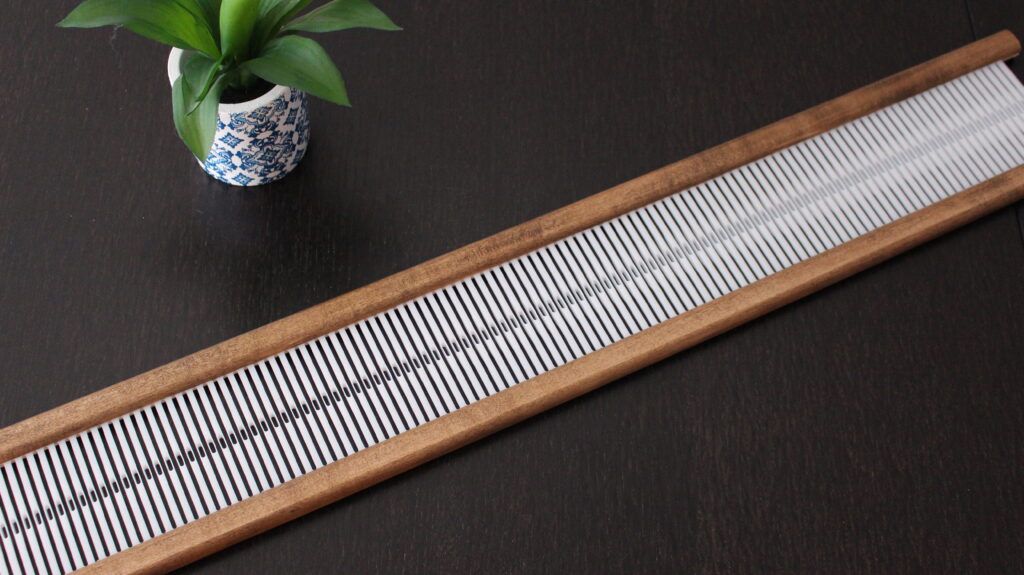
Sometimes, you will see something called EPI. This is very similar to DPI, but it’s not the same. You will often see EPI on pattern charts, and it refers to the number of yarn end per inch that a pattern needs. As we saw, DPI refers to “dents”, so holes and slots. It’s a fixed number. You cannot have more holes or slots than what the heddle already has. However, you can have more than one thread in each of these holes and slots. Often, patterns will require that you double the warp threads.
For example, I have a 12 sized heddle, which means it has a DPI of 12. The pattern I want to make asks for an EPI of 24. This means that I need to double threads in each slots and holes. This way, I have: 12 dents per inch on my heddle X 2 threads in each dent which equals to 24 threads per inch. In other words, I will have an EPI of 24.
The Warp
The warp represents the threads that you see vertically while looking at your loom. A good warp thread will be resistant to tension and friction. The warp threads are put under a lot of tension on the loom. Also, the heddle will pass many times by the threads as we beat. Thus, the warp needs to keep up with the constant friction coming from the heddle. There are two tests that can help you decide whether a yarn will be suitable for warp.
The first one is the tension test. To do it, you need to tightly pull the thread of yarn with your two hands. If it doesn’t break, then that’s a good sign that it will resist to tension.
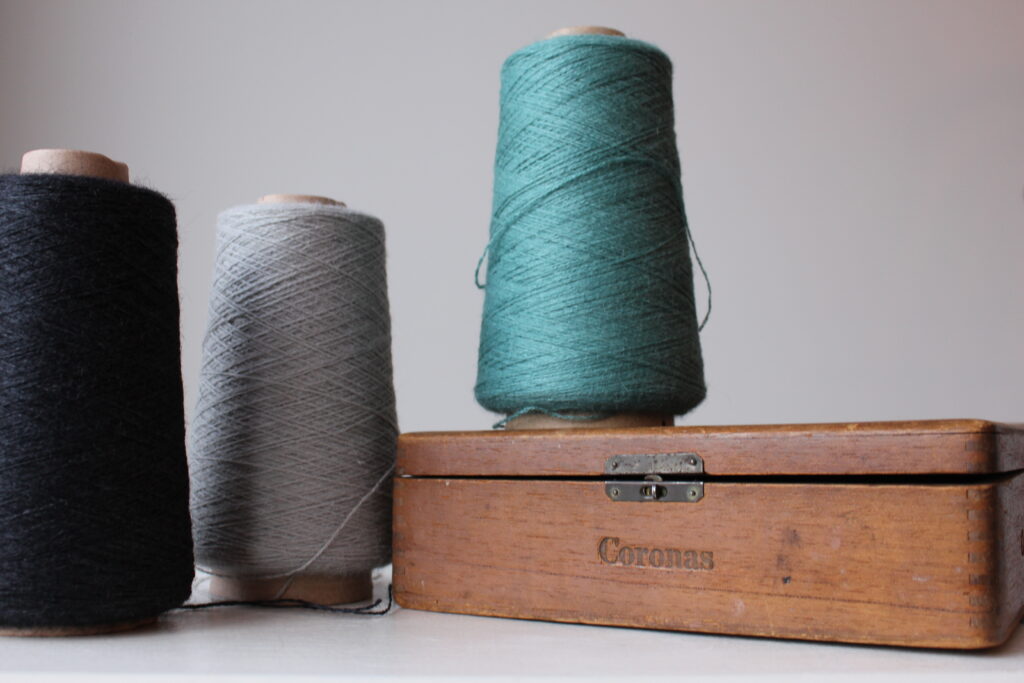
The second test is the friction test. To do it, you need to rub the thread several times between your index finger and your thumb. If the thread stays the same, then that’s a good sign that it will be a good warp thread. However, if it starts to fall apart, or if some of the fiber is coming out, then this is probably not suitable for warp. Here a video that shows what will happen if you choose the wrong warp yarn. I made this video so that you don’t have to make the same mistake. You’re welcome 😊.
As guideline, one ply yarn is usually not suitable for warp. Most often it’s not strong enough to resist the tension. I recommend using acrylic and cotton yarn that has more than 1 ply to start with as a beginner weaver.
The Weft
Weft is the yarn that you see horizontally while looking at your loom. It’s the yarn that we put on the shuttle. Any yarn can be used for weft. Literally, anything! Have fun with it!
Shuttle
The shuttle is the tool we use to weave the weft. Shuttles come in different shapes and sizes. While starting with rigid heddle weaving, stick shuttles work the best. You can use them for both thin and thick yarn. And they are normally cheap.

Selvedges
The left and right edges of your woven fabric. Having straight selvedges is often the first challenge that beginner weavers face. Here’s a tutorial on how to improve them.
Shed
The shed is the opening created when the heddle is in the up or down position. This is where we pass the shuttle. It’s important to make sure that you have a clear shed in order to avoid floats in your woven cloth.
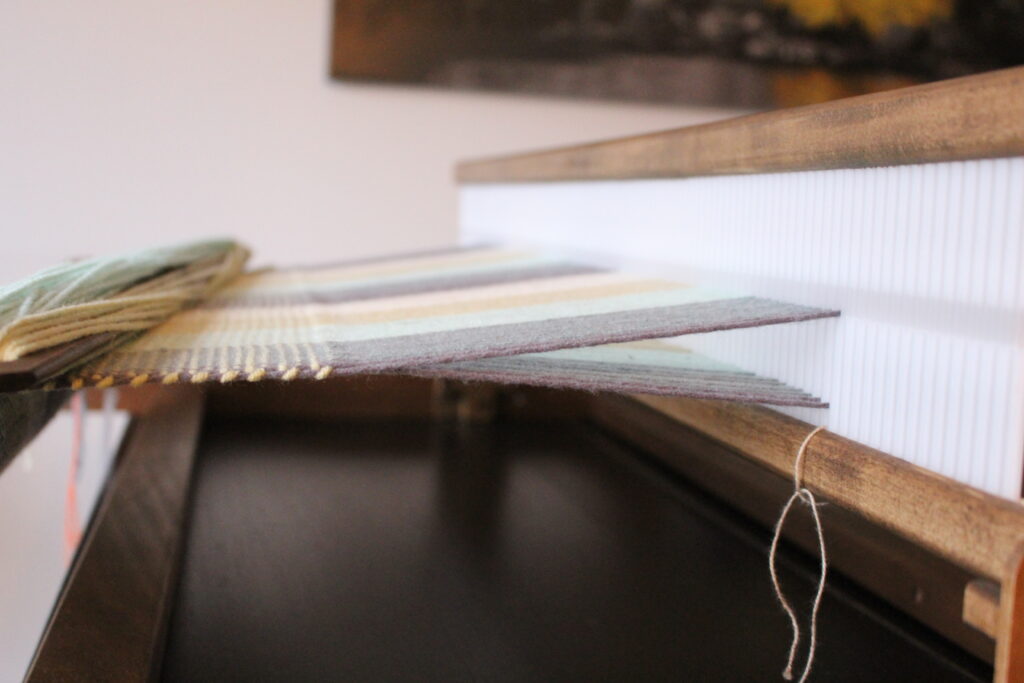
Here’s all the words that are covered in this beginner’s guide to rigid heddle loom vocabulary. This list is not exhaustive, and chances are that you will encounter other new terms on your weaving journey. Still, this is a good start, and it should help you start weaving on the right foot.
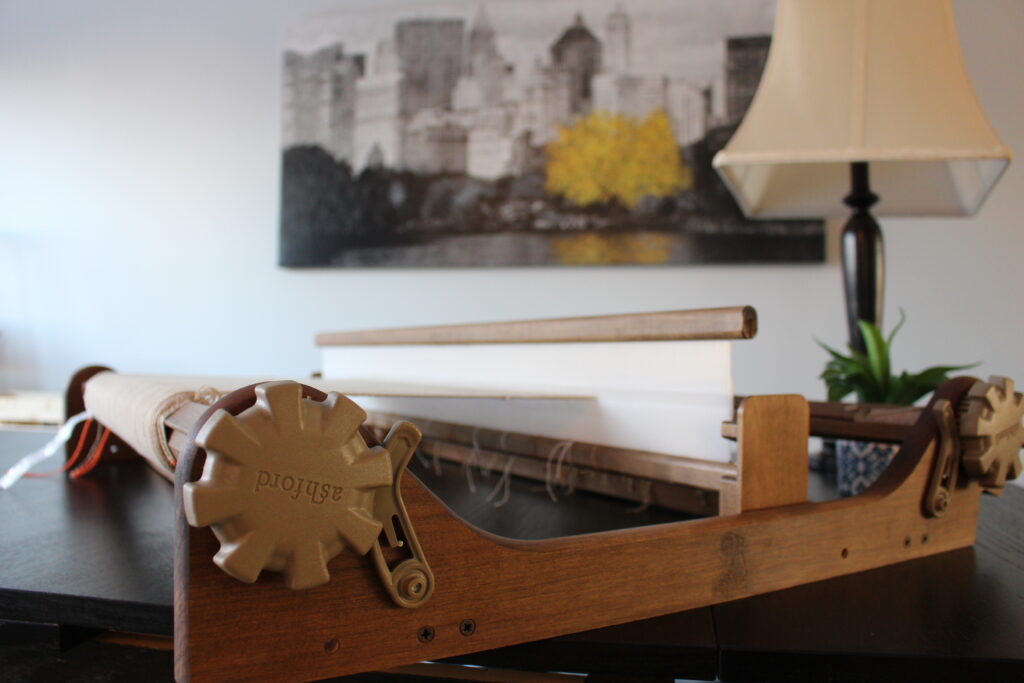
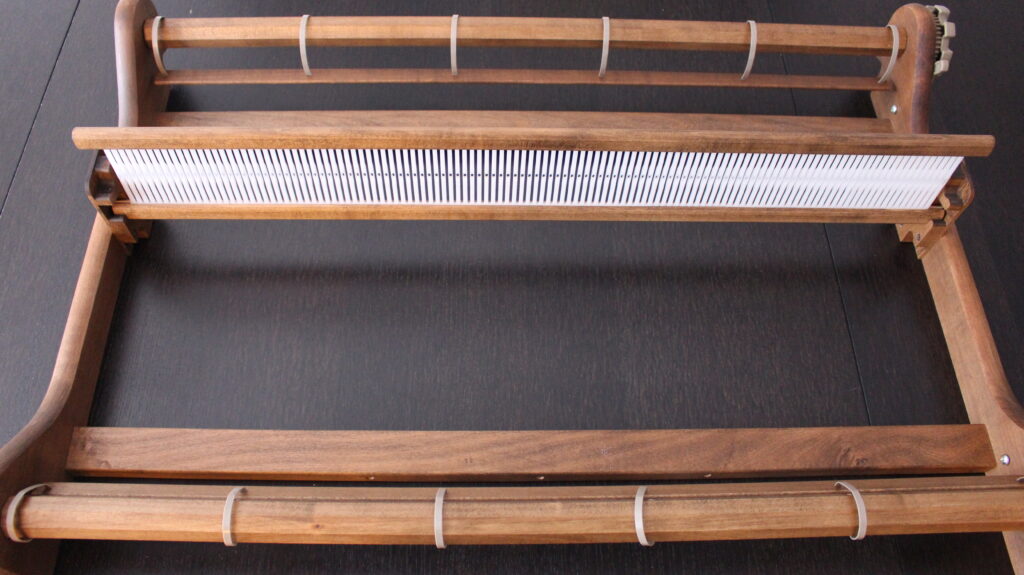
Is there any video clips on setting up or putting together a rigid heddle? I need help getting it right!!
Hello! Here’s a YouTube video made by Ashford that explains how to set up their rigid heddle looms: https://www.youtube.com/watch?v=bkAk-6VGlMs I hope it helps!
I am brand-spanking new to weaving, any weaving. I’ve purchased and successfully set up a rigid heddle loom, and following manufacturer’s instructions warped it and wove a project (not pretty), but undiscouraged I’m ready to try again. Can you please help with reading patterns and what are the patterns referring to when they say, “four shaft loom”?
I am only looking at patterns for beginners.
Thank you for any assistance!
Welcome to weaving! To answer your question, “four shaft loom” refers to a kind of loom that is different than your rigid heddle loom. The name comes from the fact that this type of loom has 4 shafts which allows for more complicated patterns. For instance, on your rigid heddle loom, your heddle represents two shaft: one when it’s in the up-position and one when it’s in the down-position. It’s possible to adapt patterns for 4-shafts looms to your rigid heddle loom, but you would need to add heddles or heddle rods. So it’s quite complicated and not really beginner friendly. For a beginner, I recommend looking for patterns made specially for RHL. I have made a few easy projects on my website and on my YouTube channel: https://www.youtube.com/channel/UCJmnI1qMyoCFAYGUtwA5xXg I hope it helps you!
I want to buy a loom and begin weaving, but most of the projects I see are scarves. I don’t need a lot of scarves. I could try a table runner or placemats. I’m afraid I’ll get hooked on this, and make items I don’t need, or can’t gift. Thoughts?
Thanks!
That’s a good question and I feel like this kind of experience can be different for every weaver. In my case, I can’t seem to be weaving fast enough to respond to the demand for dishtowels from my friends and familly! I also live in a corner of the world that’s pretty cold, so scarves are always appreciated. I have woven a few placemats and one table runner and I feel like I could still do more of those. Also, I made several baby blankets and curtains. In up-coming projects, I want to weave something to hang on the wall and I also wish to weave pieces of fabric that I will eventually turn into a piece of clothing. In other words, the danger of getting hooked is real! But there’s also a lot more to weaving than just scarves. I hope this helps you 🙂